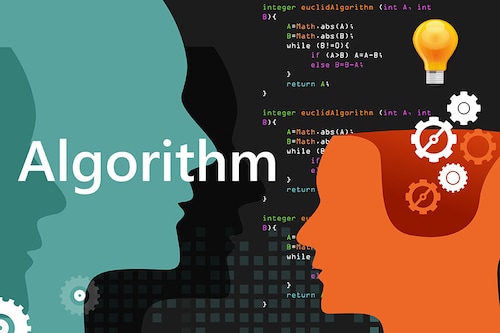How to get managers to heed algorithm-based recommendations
A study at Zara shows what companies must do to optimize human-algorithm interactions.


Companies are turning to algorithms for recommendations on everything from which job candidate may be the best fit, to what products will tempt their customers. But to get the most out of these advanced analytical tools, companies must remember a key element: the human managers who will be using them, because the human-algorithm relationship is crucial to the tools’ effectiveness.
To understand this interaction, IESE Business School’s Anna Saez de Tejada Cuenca and UCLA Anderson’s Felipe Caro looked at managers’ use of algorithm-based decision support systems (DSS) for seven clearance markdown campaigns at Zara. The algorithm made recommendations, but it was up to the human managers to adopt or override them.
In a pilot test, Zara found that managers who followed the DSS recommendations increased revenue from clearance sales by almost 6%. That led Zara to roll out the use of DSS across its stores and franchises worldwide.
But then something changed: managers started ignoring the DSS recommendations, sometimes more than half the time moreover, they would lower prices when the system recommended keeping them the same, or they would apply more aggressive markdowns than what was recommended. The result: managers that deviated more often from the DSS advice achieved less revenue.
What happened? Human biases kicked in. Specifically, managers were used to receiving weekly reports showing current inventory levels and they typically made decisions aimed at ensuring that nearly all remaining stock was sold as soon as possible.
The DSS, however, made recommendations with the goal that overall revenue would be higher at the end of clearance sales, and that could mean more conservative markdowns in the initial periods. Yet, if managers’ attention was focused on inventory, then they naturally ignored the algorithm.
Zara was not alone in experiencing this: past research involving a consumer electronics firm found its managers overrode DSS recommendations more than 80% of the time, also for peculiar human reasons.
“It is critical that we understand how human decision-makers interact with such tools to design them in a way that entices managers to adhere to their recommendations," insists Saez de Tejada.
The research, which was published in Manufacturing & Service Operations Management, identified these biases:
Status quo bias: Recognizing that humans are generally reluctant to change, analytics tools should make clear the logics behind the recommendations, especially those that deviate from the previously accepted rule of thumb. Decisions can be benchmarked from one season to the next, so managers can see the performance of the new action taken compared with decisions made the old way. This can help educate managers to accept changes and build trust in the DSS.
Salience: Figure out what the salient metrics are for managers (inventory vs. revenue). If actions seem counterintuitive (e.g., less aggressive markdowns may lead to slower sales but more revenue overall), these can be explained and supplemented with additional dashboards that compare/contrast the forecasts of different actions according to the salient goal.
The cost of attention: Managers only have so much cognitive capacity. The DSS should simplify choices as much as possible, so managers don’t have to track vast reams of data across hundreds of different categories or make too many choices simultaneously. Although Zara managers understood that the DSS was a tool to simplify their lives, the majority were more likely to deviate from the tool’s output when they were overwhelmed with too many pricing recommendations to check.
In light of these biases, Zara subsequently revised its dashboards, with better results. “Providing not only feedback on managers’ realized revenue, but also making such feedback more interpretable, had a strong, positive effect, increasing the adherence of those who used to override the tool the most," the authors noted.
Methodology, briefly
The study is based on decision support system (DSS) usage data collected from seven sales campaigns of the fashion retailer Zara.
First Published: Sep 15, 2023, 16:04
Subscribe Now